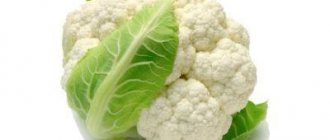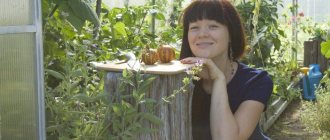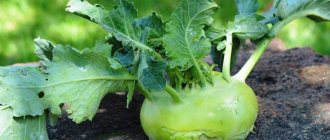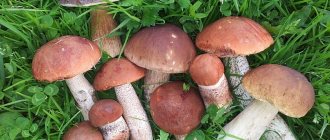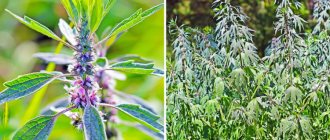Vegetable or berry: what is it?
Is it a berry or not, or maybe it is a beet, a root vegetable or a fruit? In fact, rutabaga is a hybrid vegetable, developed by crossing turnips and cabbage. In its shape, rutabaga resembles a beet, but the color of the fruit pulp is bright yellow or white. The peel of some varieties of vegetables has a burgundy tint similar to beetroot, making the vegetables easy to confuse.
Important! Rutabaga is often mistakenly called fodder beet, although the plants belong to different families.
What are the benefits of rutabaga for the human body?
When consumed regularly, the root vegetable can bring significant health benefits. In particular, this vegetable:
- effectively strengthens the immune system and helps protect health from infections and viruses;
- prevents the onset of vitamin deficiency, rutabaga contains almost all vitamins and maintains the balance of nutrients in the body;
- has a mild laxative effect and helps get rid of constipation;
- has a beneficial effect on blood vessels, equalizes blood pressure and helps fight atherosclerosis;
- protects the heart from the development of heart attacks and other dangerous ailments;
- has a diuretic effect, due to which it brings health benefits if you are prone to edema;
- helps cope with diseases of the respiratory system, as it removes phlegm from the bronchi and lungs;
- has a beneficial effect on pneumonia and bronchial asthma;
- helps fight muscle weakness or strain;
- has a healing effect and restores the skin in the presence of wounds, ulcers and burns;
- improves blood composition and increases hemoglobin levels;
- reduces inflammation in sore throat and oral diseases.
The product can be used to prevent cancer. The vegetable contains many antioxidants and therefore benefits health by preventing the occurrence of malignant tumors.
Beneficial properties of rutabaga for men
Regular use of the product helps maintain men's health and protects the genitourinary system from inflammation. The benefit is that with the use of the vegetable, prostatitis develops less frequently, and the product also prevents the appearance of oncological tumors.
Eating vegetables improves vascular and heart health
The high potassium content in rutabaga also brings great health benefits. The root vegetable helps strengthen blood vessels and prevent the development of atherosclerosis. Therefore, when consuming vegetables, men are less likely to suffer from cardiovascular diseases, to which they are especially prone even at a young age.
Botanical description
Rutabaga (lat. Brassica napobrassica) is a biennial cross-pollinating plant that belongs to the Brassica or Cruciferous family. The vegetable is characterized by high yield and cold resistance. Rutabaga is not a type of industrial crop that provides raw materials for the food industry. Technically, there are two varieties of rutabaga:
- dining room – consumed as human food;
- fodder - used for animal feed, is a cross between fodder cabbage and table rutabaga.
There are no wild varieties of the plant.
Eating
- Rutabaga is eaten raw, making salads from it, for example, with mushrooms, onions, horseradish, apples;
- root vegetables can be boiled and baked;
- rutabaga porridge is very healthy and low in calories;
- stewed rutabaga with honey and nuts becomes a real medicine for people with a weak cardiovascular system;
- rutabaga is stewed and soup is made from it.
Rutabaga is very useful for expectant mothers.
Despite the fact that rutabaga is not widespread in our latitudes, it is held in high esteem abroad. The Swiss town of Richterswil hosts the Rutabaga Festival every November. This event dates back more than a hundred years.
Structure
In the first year of the life cycle, a rosette of leaves and a fleshy root develop from the seeds. In the second year, these root crops, preserved until next spring, form peduncles and produce fruits with seeds.
The roots of the plant go to a depth of more than 1 meter , spreading 10-70 cm wide. The stems are erect and tall. The leaves are green or dark green, lyre-shaped, the leaf blades are usually dissected. The middle row of leaves half covers the stem, the lower leaves are collected in a rosette.
Rutabaga flowers are collected in a raceme inflorescence. The flower petals are golden yellow in color; pollinated by insects. The seeds are formed in fruits (pods 5-10 cm long) on a peduncle 1-3 cm long. The fruit has either a smooth or slightly lumpy surface. The pods contain spherical seeds, dark brown in color, about 1.5 mm in diameter. Seeds remain viable for 5-6 years.
Site selection and soil preparation
It is advisable to grow rutabaga in well-lit places, but the plant can also tolerate darkening. The soil must be fertile and breathable. It is not recommended to plant this crop in areas with high acidity - this leads to a deterioration in the quality and volume of the harvest. Loamy, sandy and chernozem soil is suitable for planting. The best predecessors for rutabaga are pumpkin, nightshade and legumes, as well as cereals.
The planting site should be prepared no later than 2-3 months before planting. To do this, dig the bed to a depth of 1-2 shovels. Remove plant debris, large stones and rhizomes. Add organic matter (humus or manure at the rate of 5 kg/m2), you can also use mineral compounds, for example, a mixture of superphosphate, potassium salt and ammonium nitrate, 30 g of each product per 1 m2.
Biological features
The growing season is 100-120 days . On the 20-30th day after germination, the thickening of the root crop begins, by 90-100 days the weight reaches 800-1000 grams. Subsequently, the weight gain of the root crop continues, but the skin thickens and the flesh becomes coarser.
Seeds germinate at low temperatures – 2-3 °C. The seedlings can withstand light frosts down to -3 °C. The optimal temperature for vegetable growth is 15-18 °C.
Rutabaga is a moisture-loving crop and requires abundant and constant moisture. The vegetable is also a long-day plant and needs good lighting.
Harvesting and storage
Rutabaga can be harvested 3-4 months after planting in the ground. If you plan to store the crop for a long time, then harvest the root crops already with the onset of the first frost. After being removed from the ground, rutabaga should be dried, cleared of soil, and then the above-ground part at the base should be cut off.
The harvest should be stored in a dark, dry and ventilated room with a temperature of 3 to 5 o C. To preserve its presentation, rutabaga is placed on the floor or shelves in the basement. Experienced gardeners recommend storing root vegetables in boxes filled with river sand or sawdust.
How and where does it grow?
Rutabaga grows well on light loamy and sandy loam soils with a neutral or slightly acidic reaction.
The plant is sensitive to a lack of phosphorus, calcium, potassium and boron in the soil. An area where groundwater is too close to the surface is not suitable for planting crops.
The bed is selected taking into account the crop rotation of vegetable crops. Nightshades and legumes are considered good predecessors, while closely related genera (turnips, cabbage, radishes) are considered bad ones. This should definitely be taken into account when choosing a place to plant a vegetable if you want to get a good harvest.
Brief history and country of origin
Botanists have established that rutabaga is one of the oldest vegetable crops of Northern European or Russian origin . Rutabaga, the result of an accidental cross between kale and turnip, first appears in the works of Swiss scientist Caspar Bauning in 1620, who discovered the vegetable in Sweden.
Rutabaga was very popular in the Scandinavian countries, Germany and Russia, before being replaced by potatoes.
I.V. Goethe called rutabaga his favorite vegetable.
Rutabaga for weight loss
Due to the fact that the root vegetable is considered a low-calorie product, it is recommended for consumption by people who want to lose body fat. In addition, a significant role is played by the significant list of useful substances that are present in the product.
Thanks to this, the culture is used as the main ingredient, satiating the stomach for a long time and eliminating the feeling of hunger. At the same time, the available fiber promotes the accelerated removal of toxic substances and waste from the body, which has a beneficial effect on the patient’s metabolism and digestion.
Chemical composition
Rutabaga is one of the most valuable vegetable crops due to its nutritional qualities.:
- dry matter – 12%;
- carbohydrates – 5-10%;
- fiber – 1.7%;
- pectin substances, protein – 1.6%;
- vitamins – C, B1, B2, B6, PP, carotene;
- microelements – potassium, calcium, phosphorus, folic acid, magnesium, boron.
Reference! In terms of vitamin C content, rutabaga is several times higher than carrots, tomatoes, and beets. It is preserved in vegetables both fresh and boiled.
Properties of rutabaga - harm and benefit
Useful properties of rutabaga
The composition of rutabaga includes sugars, vegetable protein, fats, fiber, easily digestible carbohydrates, ascorbic acid (vitamin C), carotene (provitamin A), B vitamins, rutin, essential oil, trace elements potassium, sulfur, sodium, copper, phosphorus and iron. Rutabaga contains a high percentage of calcium, making it an excellent remedy for treating soft bones. Rutabaga seeds have long been used to rinse the mouth for inflammatory processes and treat measles in children.
- Bacopa: growing from seeds, types and varieties
Rutabaga root vegetables are a good diuretic, anti-burn, wound-healing and anti-inflammatory agent. Rutabaga juice was used to treat poorly healing purulent wounds and burns. In addition, rutabaga is a valuable food product, especially in winter and spring, during periods of vitamin deficiency. Since rutabaga root vegetables contain a lot of coarse fiber, they are recommended to be eaten for constipation; rutabaga pulp is indicated in the treatment of atherosclerosis.
Our ancestors have been eating rutabaga for a long time, since it was believed that it was a source of vitality for the elderly, and due to its high content of ascorbic acid, it promotes rapid recovery from colds and strengthens the immune system. The diuretic effect of rutabaga is used to remove excess fluid from the body in the treatment of hypertension.
Rutabaga also has a mucolytic effect - it thins sputum in diseases of the lungs and bronchi: a dry, hacking cough when consuming rutabaga quickly turns into a productive expectorant cough, after which recovery occurs.
Rutabaga - contraindications
Rutabaga is not recommended for people with exacerbation of gastrointestinal diseases, since coarse plant fibers can irritate the inflamed mucous membrane of internal organs. Individual intolerance to the product is also a contraindication.
Treatment with this vegetable crop
Rutabaga is indispensable in the fight against:
- chronic constipation;
- anemia and atherosclerosis;
- colds;
- chronic pneumonia, bronchitis, asthma;
- obesity;
- ulcers and burns.
From this it is clear that this vegetable is widely used in folk medicine. Rutabaga is also widely used in cosmetology to whiten skin, get rid of age spots, freckles and pimples, prevent the appearance of wrinkles and help maintain youthful skin.
We talked in more detail about the beneficial and medicinal properties of rutabaga, as well as the possible harm of the vegetable here.
Use of vegetables in everyday life
The vegetable can be used as fodder, used in livestock farming, or as a table vegetable.
Table varieties are used:
- for treatment;
- in cosmetology;
- in cooking.
For treatment
Due to its beneficial qualities, rutabaga acts as:
- wound healing;
- anti-inflammatory;
- anti-burn;
- diuretic;
- laxative.
Here are some areas and conditions that may benefit from rutabaga:
- Strengthening bones and teeth (due to a high percentage of calcium).
- Burns and purulent inflammations (use freshly squeezed juice, as it has wound-healing and antimicrobial properties).
- Restoration of the digestive tract, gastritis, enteritis (normalizes digestion, prevents constipation, eliminates flatulence).
- Fights atherosclerosis (has a positive effect on metabolic processes, removes cholesterol from the body to prevent the deposition of plaques on the walls of blood vessels).
- Protects against the development of fungi and bacteria in the body (mustard oil contained in rutabaga, glucosinolates - phytonutrients help remove toxins from the liver, and carcinogens from the blood).
- During pregnancy (due to the large amount of zinc).
- Diseases of the respiratory system (used as an expectorant).
- To lower blood pressure, eliminate vascular spasms, stimulate the flow of oxygen (which is important to remember for hypertensive patients).
Regular consumption of rutabaga helps fight the occurrence of colon cancer.
To prevent many diseases, it is good to regularly drink fresh rutabaga juice.
A tincture of rutabaga seeds has long been used to treat measles in children. During inflammatory processes, you can rinse your mouth and throat with it due to its mucolytic and expectorant properties, its ability to liquefy and remove sputum.
To get rid of a cough you need:
- Finely grate the rutabaga.
- Mix with honey and let it brew.
- When the juice is released, squeeze out and take a tablespoon three times a day.
For weight loss
The vitamin and mineral composition of the root vegetable allows it to be included in the dietary menu. Rutabaga helps with weight loss because its fiber cleanses the intestines and other valuable substances speed up metabolism. In addition, the product is low in calories. Its calorie content is only 37 kcal.
For skin and hair
Rutabaga is also used in cosmetology:
- To get rid of freckles and to speed up hair growth, use fresh rutabaga juice. It is rubbed into the scalp or rubbed on the areas where freckles appear.
- To make a moisturizing rutabaga face mask, chop the rutabaga, add sour cream, honey and fresh cucumber juice, and mix. Apply the mask to your face, remove it after 15-20 minutes with a cotton swab or napkin.
In cooking
In cooking, rutabaga is used:
- raw in salads (including tops);
- after heat treatment (stewed, fried and boiled).
Stewed or boiled rutabaga will be a good side dish for meat or fish. You can stuff the vegetable and make a delicate filling for pies from it. In Udmurt cuisine, such pies are called syrchinyan.
Rutabaga is also tasty together with other vegetables in vinaigrettes and stewed vegetable stews. Dried rutabaga tops will be a piquant addition to sauces and first courses. Here are examples of several simple and delicious rutabaga dishes.
To prepare a light salad of raw rutabaga and carrots, you need:
- Grate a medium rutabaga and two carrots.
- Add a handful of raisins.
- Mix everything, adding a handful of crushed walnuts.
- Season the salad with light mayonnaise sauce or Greek yogurt.
Another recipe for a light salad with rutabaga:
- Soak 50 g of raisins in hot water and leave for 15 minutes, rinse.
- Grate one rutabaga, one apple.
- Mix the salad ingredients, sprinkle chopped green onions on top, and season with vegetable oil.
You can prepare rutabaga soup this way:
- Cut into cubes 1 rutabaga, 1 onion and 50 g. celery root.
- Grate 1 carrot.
- Pour 1.5 liters of vegetables. boiling water and add half a glass of washed barley.
- Cook for 20 minutes, before finishing cooking, add salt, pepper, turmeric.
- Season with sour cream.
It is healthy and tasty to eat rutabaga without adding anything, simply boiling it or baking it in the oven.
Varieties
The most popular varieties of table rutabaga:
- Krasnoselskaya is an early ripening variety (90 days) with a long shelf life. The flesh is deep yellow, the skin is greenish-yellow.
- Swedish - ripens in 130 days, has high yield. The fruit is flat, the peel is yellow-green, the flesh is bright yellow.
- Ruby is the newest and most frost-resistant variety, with improved taste and disease resistance. Has an average ripening speed (up to 100 days).
- Russian dessert is a cold-resistant and unpretentious variety with excellent taste. The fruit is firm, juicy and sweet, weighing 350-500 g. Medium early ripening (90-110 days).
- Zeltene Abolu is a mid-season variety. Medium-sized fruits (up to 450 g) are round-flat, gray-green with a purple tint on the upper part and yellow flesh.
Forage species of rutabaga have high yields and are undemanding to growth conditions. The fruit pulp is coarse and tough and is grown only for livestock feed. The most popular varieties in agriculture:
- Hoffmanskaya.
- Bangholmskaya.
- Vyshegorodskaya.
Growing
Let's look at the features of growing rutabaga and caring for vegetables.
Landing
Rutabaga is sown in two periods: early spring (summer harvest) and summer (autumn harvest). You can sow seeds either directly into open ground, or grow them through seedlings: seeds are sown in containers in late February - early March, sprouts are transplanted into open ground in early April.
Seeds are soaked for 30 minutes before planting in hot water . Typically, rutabaga is sown in even rows in furrows 2-3 cm deep, with a distance between seeds of at least 15 cm.
Productivity and agricultural technology
Rutabaga primarily grows in northern regions with high humidity. The average yield of root crops is 40-60 tons per hectare of sown area. The highest yield is 100 tons per hectare.
Limestone or freshly slaked lime is applied to acidic soils. As care, the plant is fed with mineral fertilizers and manure, humus or compost is added. The seed sowing rate is 0.2 grams per square meter. The plant is watered abundantly, weeded and thinned.
In Russia, the vegetable is cultivated in non-chernozem regions of the European part of the country and in Siberia.
Harvest and storage
The harvest can be harvested 2 times a year: in summer and autumn (before frost occurs). Usually table rutabaga is harvested slightly unripe with a fruit diameter of 8-12 cm, since the taste of ripened fruits deteriorates.
The ideal room temperature for storing fruits is 0-2 ºС . Vegetables are stored in cellars on shelves or in boxes with soil, covered with straw or sawdust.
How to care for rutabaga in open ground?
The plant is unpretentious in care. The procedures are standard: sufficient moisture, removal of weeds from the beds, fertilizing and protection from pests.
Watering
With a lack of moisture, rutabaga grows bitter and its pulp becomes coarse. In excess, the result is watery and tasteless root vegetables.
Irrigation features:
- during the growing season they water about 4-6 times;
- water consumption is 10 liters per 1 sq. m;
Roots exposed during watering are covered with soil.
Fertilizer
Rutabaga has a fairly long growing season. Therefore, she needs feeding. Fertilizer is applied for the first time 2 weeks after planting. The quantity and quality of additives depends on the characteristics of specific soils.
Periods:
- First time. At the stage of formation of true leaves (around June). Apply nitrogen and phosphorus fertilizers at approximately 0.3 liters per plant:
- nitrophoska 1 tbsp. l per 10 liters of water;
- liquid organic matter (1 kg of manure is diluted in 10 liters of water).
- Second time. During the closing of rows. Phosphorus-potassium mineral mixtures are added. For example, superphosphate (20-30 g of granular fertilizer per 1 sq. m of planting).
During the growing season, it is recommended to spray the tops with boric acid. For foliar feeding, prepare a solution of 10 g of acid and 2 g of potassium permanganate, diluted in 10 liters of water. The consumption will be 1 liter of solution per sq.m.
In rutabaga, at the height of the growing season, the lower leaves may dry out and die. This is not a symptom of a disease or a reaction to unfavorable conditions, but a feature of the plant.
Weeding, loosening, thinning
Agrotechnical measures are recommended to be carried out 1-2 days after watering. Use a hoe carefully so as not to damage the root crops. The soil is regularly sprinkled with mulch to slow down the evaporation of moisture, prevent the growth of weeds and reduce the amount of loosening.
Thinning must be carried out on beds with crops planted in open ground. The weakest plants are removed, the strongest ones are left.
The procedure is carried out in 2 stages:
- The first is carried out at the moment the first leaves appear. Leave two plants for every 10 cm.
- The second time rutabaga is broken through when four true leaves appear. There should be 20 cm between adjacent specimens.
Rutabagas planted as seedlings do not need thinning. She is immediately planted at the prescribed distance.
Diseases and pests
Rutabaga is susceptible to the same diseases and ailments as other types of cabbage:
- underwear;
- felt disease;
- mosaic;
- clubroot;
- vascular bacteriosis;
- black skin.
In order to prevent the occurrence of diseases and pests, the following are indicated:
- disinfection of seed material;
- carrying out systematic weeding and thinning;
- compliance with crop rotation rules;
- spraying with insecticides.
Important! It is recommended to plant plants such as marigolds, marigolds, and nasturtiums together with rutabaga, as they repel white flies, aphids and cabbage flies.
Rutabaga is a nutritious and very useful vegetable in its composition, which has many varieties. It does not require active care and, under the right storage conditions, will please gardeners all winter. Rutabaga can be consumed both raw and processed: steamed, stewed, boiled and fried - cookbooks contain a lot of recipes for preparing this wonderful product.
Healthy recipes
The taste characteristics of a dish directly depend on the quality of the products from which they are prepared and compliance with the technological process conditions.
When buying rutabaga, give preference to root vegetables that are firm to the touch, without foreign odors or damage. The vegetable should smell like earth and be of medium, impressive size. A small stalk will be bitter and not very juicy. This may spoil the taste of the dish. To eliminate even slight bitterness, place the root vegetable in cold water for 30-45 minutes.
Soups, casseroles, stews, and purees are prepared from rutabaga. The product is served boiled, baked, or fried. It can be stewed with spices in sour cream and presented as a side dish for meat or fish dishes.
Recipe No. 1 “Vitamin salad with rutabaga”
Ingredients:
- apples – 2 pcs;
- rutabaga - 1 piece;
- celery – 1 branch;
- parsley – 1 bunch;
- lemon juice – 15 ml;
- sour cream – 50 ml;
- honey – 5 ml.
Cooking principle:
- Peel the rutabaga, remove the core from the apples, and grate on a fine grater.
- Prepare the sauce: mix sour cream, honey and lemon juice.
- Wash the greens and cut them.
- Mix all ingredients.
To enhance the aroma, pumpkin pulp is added to the salad.
Recipe No. 2 “Spicy baked rutabaga”
Ingredients:
- rutabaga - 1.5 kg;
- breadcrumbs – 150 g;
- chicken egg – 1 piece;
- sugar syrup – 100 ml;
- cream 20% – 400 ml;
- ground ginger – 5 g;
- nutmeg, ground white pepper - 2 g each;
- hard cheese – 100 g;
- butter.
Cooking technology:
- Remove the peel from the rutabaga, cut into small pieces, and boil until soft.
- Remove the vegetable from the pan and mash into a puree. Do not pour out the broth.
- Prepare the dressing: mix spices, eggs, cream, sugar syrup and breadcrumbs, beat with a mixer. Add a small amount of rutabaga decoction to the resulting mass. Pour into puree, stir.
- Preheat the oven.
- Grease the mold with butter, lay out the prepared mixture, sprinkle with breadcrumbs and grated cheese. Place the dish in the oven for baking. Maintain the oven temperature at 170 degrees and cook for 1.5 hours.
Recipe No. 3 “English rutabaga soup”
Ingredients:
- carrots – 2 pcs;
- onions – 1 piece;
- rutabaga - 1 piece;
- celery - stalk;
- pearl barley – 150 g;
- salt pepper.
Cooking principle:
- Peel the vegetables, chop them, place in an enamel container.
- Fill the pan with water, close the lid, and simmer for 10 minutes.
- Add pearl barley porridge. Simmer on fire for 45 minutes.
- Before turning off, season the dish with salt and pepper.
To improve the taste, add 2 fried chicken fillets and 4 slices of bacon, cut into thin strips, to the soup.
